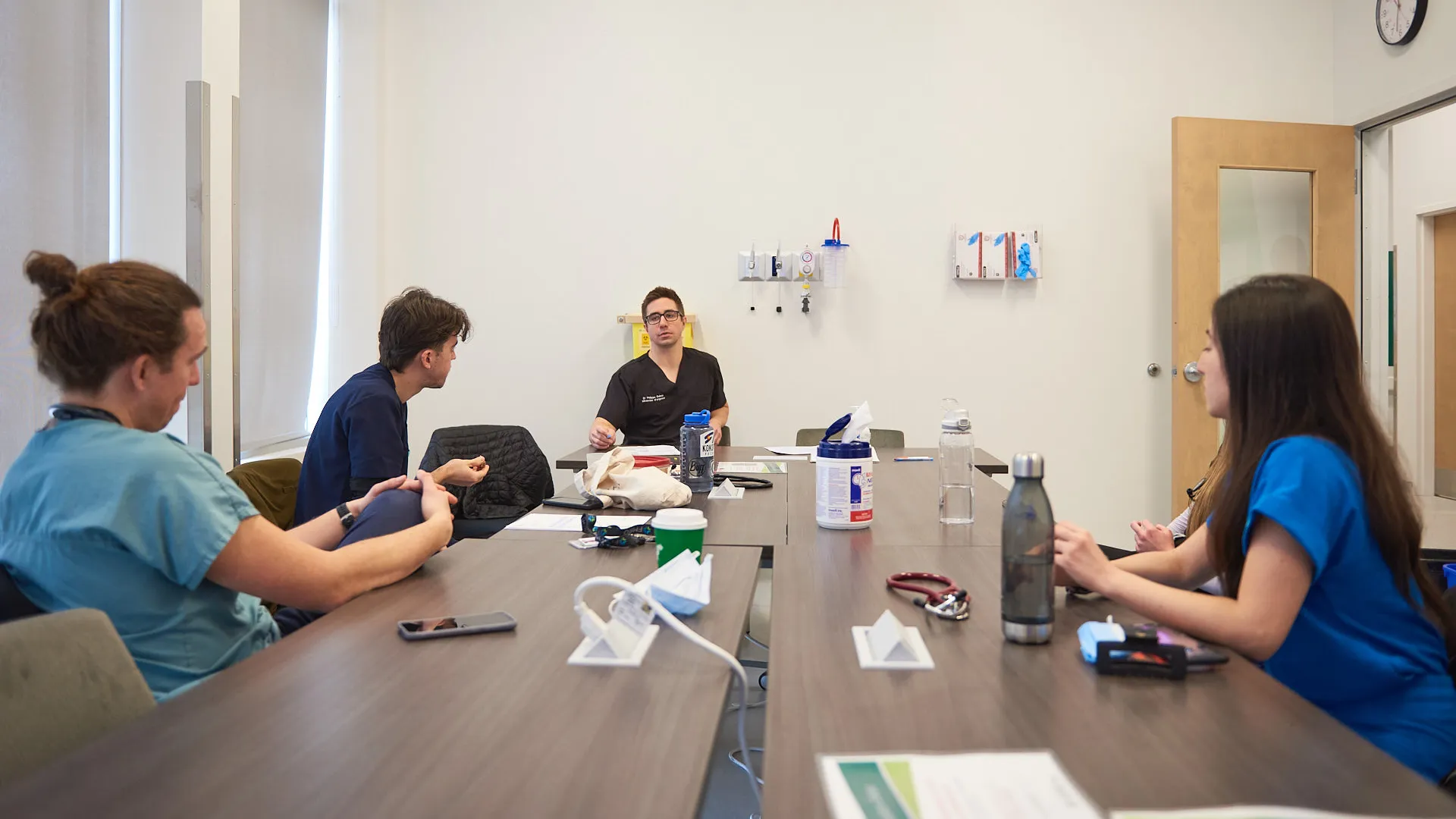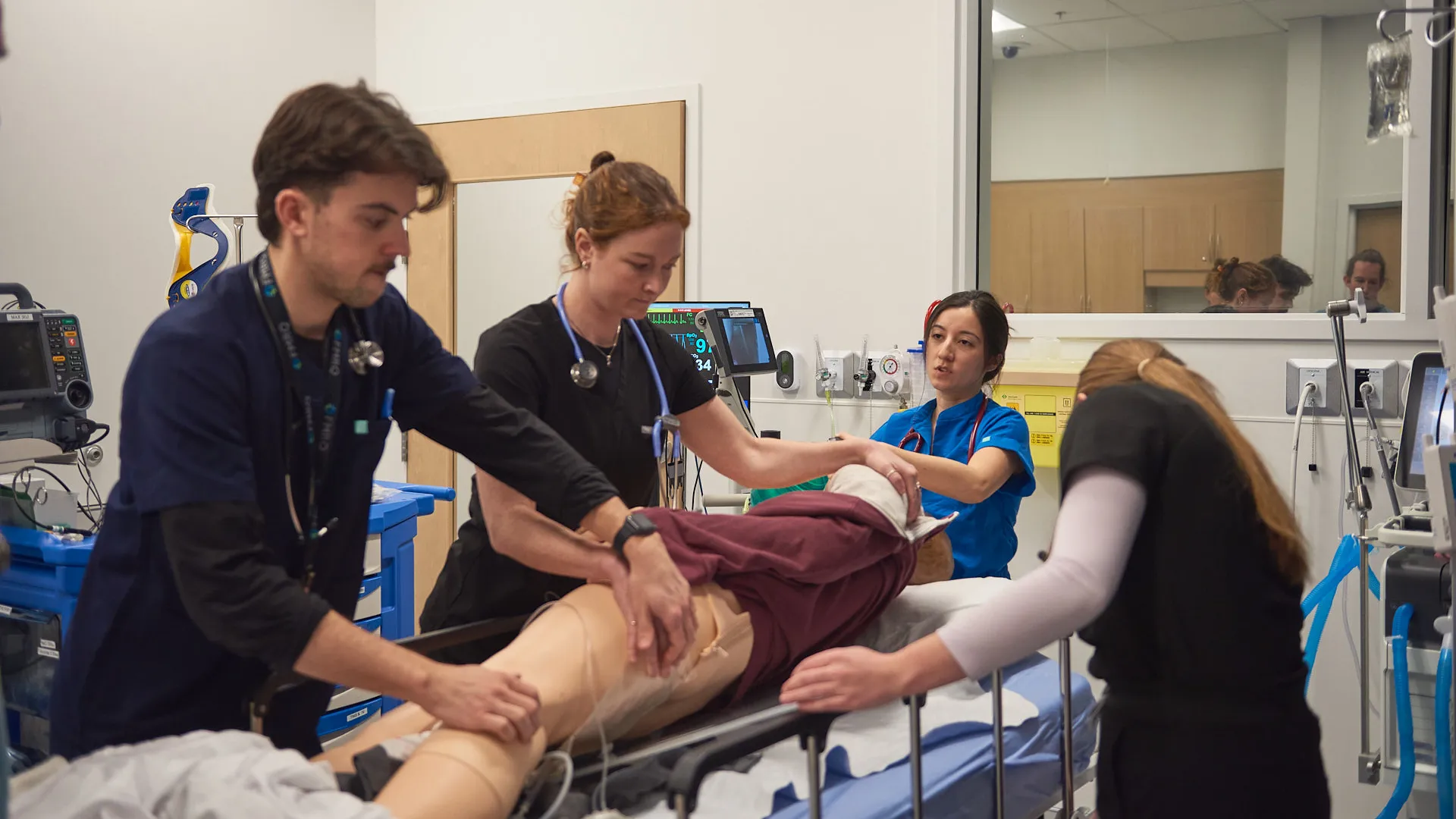News about your impact
Dive into a behind-the-scenes peek of a simulation with our medical residents!
March 18, 2024
A patient who’s been having convulsions for 25 minutes is on his way to the Hospital. He arrives. Jasmin, Agnès, Thomas, Alice and Carolane, all medical students or residents, are working around him. They take his vital signs. They administer medication. They provide ventilatory support. They manage to stabilize him. The patient can now be transferred to intensive care.
Watch a live simulation, through our photo-report or video, with a high-fidelity mannequin, supervised by professors trained in simulation. You will think you are in a real emergency room, as it feel so realistic!
The simulation room is ready!
March 17, 2023
The new site at the Faculty of Medicine and Health Sciences of Université de Sherbrooke was inaugurated by representatives of the Ministère de la Santé, right across from Hôpital Charles-Le Moyne!

And the high-fidelity simulation room so generously funded by Louise and Denis S. Arcand—and boasting some of the most modern high-tech equipment in Québec—is now up and running! It already received its first 24 students on March 6.
We will never be able to express just how grateful we are to our generous donors. Louise and Denis S. Arcand made a $2M donation, the largest private donation ever received by the Foundation, through a gift of their RIFF. An extraordinary legacy for generations of future physicians!
It’s your donations that power the development of Hôpital Charles-Le Moyne, which now ranks among the major teaching hospitals!
A short video of our colleagues at Université de Sherbrooke with behind-the-scenes images of the inauguration and the simulation room in action!
A project made possible thanks to people of heart
December 21, 2021
Investing in the education, students and doctors of tomorrow is essential for the future of hospital care. The simulation room is a project of your Hospital, but it is also the philanthropic project of Louise and Denis S. Arcand.

Life has served us well. We are now at a respectable age. We were starting to think about what we would do with our money when we died, we wanted to leave money to hospitals.
We contacted the Foundation’s Executive Director, Nathalie Boudreau, who presented us with the project of the Faculty of Medicine at Université de Sherbrooke.Louise and Denis S. Arcand
Donors of a record $2M donation
Read the full article in Courrier du Sud, in French, about this great-hearted couple!











